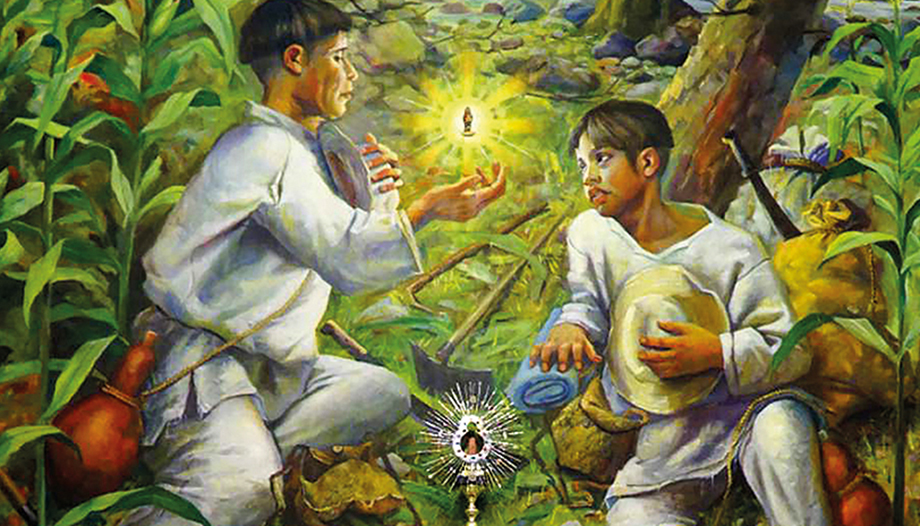The tiny image of Our Lady of the Conception of Suyapa was found one Saturday in February 1747 by the farmer Alejandro Colindres and the young Lorenzo Martínez Calona, who were returning to the village of Suyapa, tired from working all day in the corn harvest. They were already halfway through the day when night fell. They had arrived at the Piligüín ravine, a good place to spend the night. There they lay down on the hard ground.
A miraculous revelation
In the darkness of the night, Alejandro Colindres did not notice the carved image that repeatedly caused him discomfort when he was about to place his head on the yagual that the farmers used to place around his waist for multiple uses and that in cases of this nature they used as a pillow. What he considered that night as a hindrance to sleep, he kept in his saddlebag and the next morning he gave it to his mother Ana Caraballo and his sister Isabel Colindres.
Alejandro's account of the discovery was considered a miraculous revelation like the one experienced at Tepeyac by the Mexican Indian Juan Diego with the Virgin of Guadalupe, and the news circulated in the village as God's portentous blessing to the inhabitants of the village.
The image
Small, barely six and a half centimeters high, the image of the Immaculate Conception of Mary, carved in cedar wood, fit in the hand of the child Lorenzo. Her angelic gaze reflects the nobility of the indigenous race. She is dark, with an oval face, rounded cheeks, and her dirty hair reaches her shoulders. The little image has her tiny hands clasped together in an attitude of prayer. The original color of her clothing is pale pink, which is barely visible because it is completely covered by a dark mantle studded with golden stars and adorned with valuable jewelry.
The Colindres were a family with a deep religious sentiment. They placed the image on a small table, adorned with natural flowers renewed daily. They felt a great veneration for the Immaculate Conception. Then they moved it to a small room fitted out as a chapel. For more than twenty years they worshipped her in the Colindres' home in a simple and sincere way. They visited her frequently, offered her their works, and confided to her their worries and needs.
Village custom
The inhabitants of the village were also very fond of her. When someone fell ill, they used to take the image to the sick person's house so that the Virgin could visit him or her.
One day Don José de Zelaya fell ill. An important military man, owner of the hacienda "el Trapiche", located about a quarter of a league from the village. In fact, he had already been ill for some time and was suffering greatly from kidney stones. Isabel Colindres knew of his illness and sent him a message saying that, if he wanted, she could send him the image of her Virgin.
Don José accepted and they brought the Virgin in a kind of procession. Upon arrival, the sick man, fervent and contrite, asked for her healing and promised to build him a wayside shrine in exchange. Three days later, Mr. Zelaya threw the three stones that were the torment of his life into the urinary tract. This happened in the year 1768.
The image of the Virgin of Suyapa remained 21 years on the altar of the Colindres family, until in 1768 that first miracle was credited. After her first miracle, the Colindres family began to raise funds to build a chapel, which was completed in 1777. In 1925, Pope Pius XI declared her Patroness of Honduras under the title of Our Lady of Suyapa and declared February 3 as her feast day. In the 1950s a large basilica was built next to the chapel, named Basilica de Suyapa.
The Virgin has also suffered thefts on two occasions, both times recovered. The first occurred in 1936, when a mentally ill woman took her home. And the second on September 1, 1986, being found the next day wrapped in sheets of newspaper in the men's room of La Terraza de Don Pepe -a restaurant in the center of the capital-, and stripped of his suit with gold and silver and his crown.
Honduras












